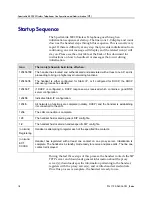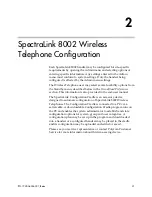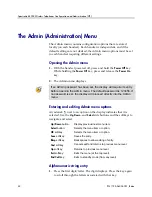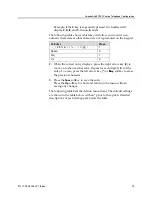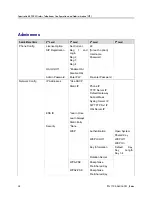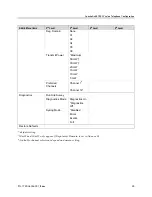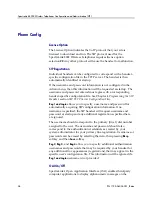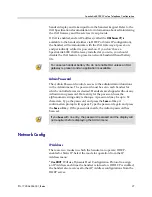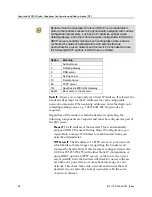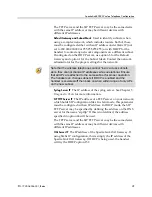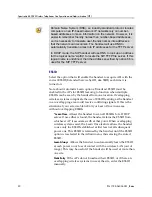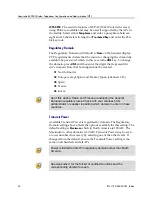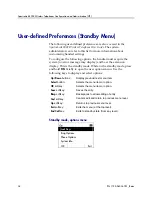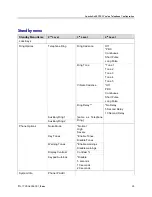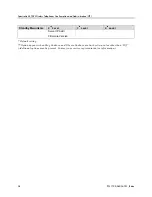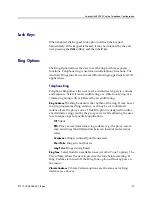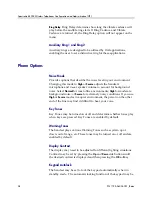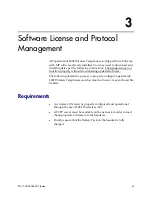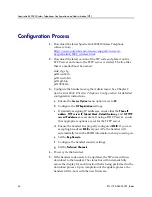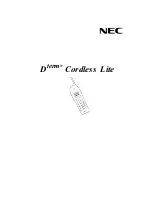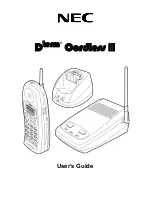
SpectraLink 8002 Wireless Telephones Configuration and Administration (SIP)
28
PN: 1725-36034-001_B.doc
Dynamic Host Configuration Protocol (DHCP) is a standardized
protocol that enables clients to be dynamically assigned with various
configuration parameters, such as an IP address, subnet mask,
default gateway, and other critical network configuration information.
DHCP servers centrally manage such configuration data, and are
configured by network administrators with settings that are
appropriate for a given network environment. The handset will use
the following DHCP options if DHCP use is enabled.
Option
Meaning
1 Subnet
mask
3 Default
gateway
6 DNS
server
7 Syslog
server
15 Domain
name
66 TFTP
server
152
SpectraLink 8000 OAI Gateway
siaddr
Boot server or next server
Static IP
Allows you to manually set a fixed IP Address. If selected, the
handset will prompt for the IP addresses for each configurable
network component. When entering addresses, enter the digits only
including leading zeroes, e.g. 192.168.001.002. No periods are
required.
Regardless of the mode in which the handset is operating, the
following components are required and must be configured as part of
the SIP system:
Phone IP
The IP address of the handset. This is automatically
assigned if DHCP is used. If using Static IP configuration, you
must obtain a unique IP Address for each handset from your
network administrator.
TFTP Server IP
The IP address of a TFTP server on your network,
which holds software images for updating the handsets and
contains the handset files. If this feature is configured (not set to
0.0.0.0 or 255.255.255.255) with either Static IP configuration or
using DHCP option 66 (TFTP server), or the boot server/next
server (siaddr) field, the handset will check for newer software
each time it is powered on or comes back into range of your
network. This check takes only a second and ensures that all
handsets in your network are kept up-to-date with the same
version of software.





